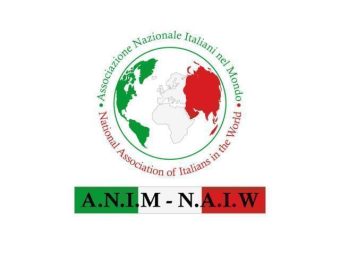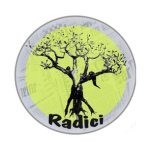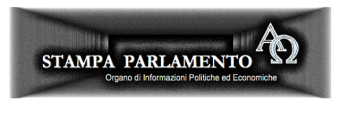Arch. Umberto Puato
PREMESSA
Mantenere in vita il più a lungo possibile un Monumento non è cosa da poco, sia dal punto di vista tecnico, sia da quello economico.
La storia del restauro è ricca di studi sul nostro patrimonio storico-artistico e architettonico, spesso di alto livello, meno purtroppo di testimonianze tangibili di una conservazione attiva, come sarebbe necessario e auspicabile per far davvero vivere il nostro indiscutibile e variegato paesaggio culturale-ambientale.
Nessun medico, generico o specialista, patologo o chirurgo, si sognerebbe mai di studiare esclusivamente i propri pazienti senze intervenire medicalmente o chirurgicamente (nei casi estremi) per prolungarne ai massimi livelli consentiti dalla umana natura lo stato di benessere o per alleviarne le sofferenze.
Non si capisce perché l’architetto, in particolare restauratore, dovrebbe sottrarsi a questo logico e naturale compito, da adempiere in stretto parallelismo con una auspicabile ancora poco compresa cultura della manutenzione che, in una opera di prevenzione analoga a quella attuata in campo medico, risolverebbe certamente quei problemi di mancato intervento per ragioni economiche.
D’altro canto una completa anamnesi del malato è necessaria alla individuazione delle cause patologiche e alla cura della malattia. Uno studio accurato del Monumento, pertanto, è base imprescindibile dell’iter restaurativo e più approfondito è, maggiormente si potrà addivenire ad una sapiente opera di conservazione e vitalizzazione.
Sfortunatamente troppe energie vengono ripetutamente spese in fasi di indagine, spesso ripetitive e non coordinate, mentre potrebbero essere più proficuamente utilizzate nelle fasi successive e conclusive della tutela, dalla progettazione alla gestione. Sicuramente una diffusione delle ricerche effettuate, non soltanto tra gli addetti ai lavori, sarebbe un significativo passo avanti in questo senso.
Questa mia tesi dal titolo Castello di Santa Severa: Centro Studi sull’Etruria Meridionale e intervento museale, raccoglie l’esito di ricerche storico-archivistiche, bibliografiche e fotografiche effettuate a più riprese tra gli anni 1988 e 1995 (circa 12 mesi effettivi) *, corredate da un rilievo architettonico completo del Castello e del Borgo in scala 1:100 (risultato dall’assemblaggio, omogeneizzazione e controllo di materiali esistenti, in particolare presso il Comune di S. Marinella, e dalla integrazione di rilievi e controlli diretti sul campo), da una ampia documentazione fotografica dell’esistente (dal punto di vista archeologico, architettonico e paesaggistico) e da una ipotesi progettuale di vitalizzazione dell’intera area (Castello, Borgo, mura ciclopiche, Area templare di Pyrgi e paesaggio circostante). Tale ipotesi consiste in un intervento museale ampio che comprende da una parte il restauro del Castello propriamente detto e la sua destinazione a “museo di sé stesso”, dall’altra il restauro del Borgo con destinazione degli attuali spazi abitativi a Centro Studi sull’Etruria Meridionale (con annessi spazi espositivi permanenti e temporanei, laboratori di ricerca e restauro, residenze per ricercatori, docenti, visitatori e personale di custodia, ristoro).
Un accento particolare è posto, inoltre, sulla musealizzazione dei reperti archeologici di varia natura (tradizionale e industriale) e architettonici, che già furono in un certo senso esposti nel “museo open-air” del Borgo nel corso dei restauri più significativi eseguiti tra il 1961-1965 dal Pio Istituto S. Spirito (restauri protrattisi anche in anni successivi: esistono iscrizioni dell’Istituto datate 1968 anche sulle pavimentazioni esterne).
Accanto a ciò va compresa anche la musealizzazione della cinta muraria fortificata (con particolare riferimento alle mura ciclopiche a nord), dell’antistante area marittima dell’ex Porto di Pyrgi con l’adiacente Area Sacra e Antiquarium omonimi. Il tutto nel rispetto del complesso ambiente storico, naturale e antropico, delle attuali esigenze di conservazione e delle giuste compatibili vitalizzazioni funzionali e architettoniche che necessitano ad uno spazio così multiforme per continuare a vivere, a comunicare la propria storia, ad essere vissuto e amato dalla gente.
Un segno positivo viene proprio dai restauri che si vanno compiendo in questi giorni al Maschio del Castello (risultato di un sofferto percorso iniziato ufficialmente nel 1983, ma in realtà già dopo i restauri del 1961-65, che sembra aver sempre caratterizzato la storia del Monumento fin da epoca remota).
Speriamo di non dover attendere ancora chissà quanti anni per vedere restaurata anche la “vita” di questo spazio di storia italiana.
Proprio in questo momento ci giunge la indesiderata ma significativa notizia della improvvisa morte di Massimo Pallottino, noto e indiscusso padre dell’Etruscologia, che nel 1957 scoprì le famose lamine d’oro di Pyrgi, riferimento nella interpretazione della ostica lingua etrusca.
Forse la coincidenza con la conclusione di questo mio lavoro non è casuale.
Desidero dedicare le energie spese (in un lungo e faticoso periodo di depressione) e l’esito della ricerca a questa figura di studioso e di uomo che tanto ha dato al prestigio del nostro Paese in tutto il mondo.
- Benché non sia stato possibile accedere ai documenti conservati nell’Archivio dell’Ospedale S. Spirito a causa del riordinamento dello stesso nel periodo dell’indagine, ciò non limita i risultati di questa ricerca poiché, va ricordato, a tale documentazione fanno ampiamente riferimento pubblicazioni già esistenti e, in particolare, il testo di Protani V. – Frau B., Pyrgi e il Castello di Santa Severa. Guida storico archeologica, Comune di S. Marinella – Gruppo Archeologico Romano, s.l., 1988 (1989²).
Una ulteriore ricognizione potrebbe essere condotta anche presso la Soprintendenza Archivistica del Lazio.
Roma, 7 – 8 febbraio 1995
arch. Umberto Puato
- ESTRATTO DALLA RELAZIONE ORIGINALE *
QUESTA RELAZIONE DI COMPONE DI N. 550 PAGINE TOTALI
(N. 1 COPERTINA, N. 3 INDICE, N. 546 TESTO)
PER QUALUNQUE INFORMAZIONE
ED EVENTUALE UTILIZZO DI QUESTO MATERIALE, A QUALUNQUE TITOLO, SI PREGA RIVOLGERSI ALL’AUTORE:
© 1988-1995, ARCH. UMBERTO PUATO, VIA GIUSEPPE DONATI N. 41 00159 ROMA, TEL. 06-4393853
AGGIORNAMENTO IN RICORDO
DEL XXV ANNIVERSARIO DELLA SCOMPARSA DELL’ETRUSCOLOGO PROF. MASSIMO PALLOTTINO
© 1988-1995-2020, PROF. ARCH. UMBERTO PUATO, VIA VICOVARO N. 17
00012 GUIDONIA MONTECELIO-ROMA, TEL. +39 3381440655 + 39 0774367580
Grafica e Stampa: CulturAmbiente Associazione Internazionale & Centro per la Pace
Roma, 1995 – 2020
TRIBUTE TO THE GREAT ETRUSCOLOGIST PROF. MASSIMO PALLOTTINO IN THE XXV ANNIVERSARY OF THE DEADLINEThe restoration and museological intervention of the Castle of Santa Severa by Prof. Arch. Umberto Puato
PREMISE
Keeping a monument alive for as long as possible is no small thing, both from a technical and an economic point of view.The history of the restoration is rich in studies on our historical-artistic and architectural heritage, often of a high standard, less unfortunately tangible evidence of active conservation, as it would be necessary and desirable to really make our indisputable and varied cultural-environmental landscape live .No doctor, general practitioner or specialist, pathologist or surgeon, would ever dream of studying his own patients without intervening medically or surgically (in extreme cases) to prolong their state of well-being to the maximum levels permitted by human nature or to alleviate their suffering.It is not clear why the architect, in particular restorer, should avoid this logical and natural task, to be carried out in close parallel with a desirable yet poorly understood culture of maintenance which, in a prevention work similar to that implemented in the medical field, would certainly solve those problems of non-intervention for economic reasons.On the other hand, a complete medical history of the patient is necessary to identify the pathological causes and cure the disease. A careful study of the monument, therefore, is an essential basis for the restoration process and the more detailed it is, the more it will be possible to achieve a wise work of conservation and revitalization.Unfortunately too much energy is repeatedly spent in investigation phases, often repetitive and uncoordinated, while they could be more profitably used in the subsequent and final stages of protection, from design to management. Certainly a diffusion of the research carried out, not only among the experts, would be a significant step forward in this sense.This thesis of mine entitled Castello di Santa Severa: Center of Studies on Southern Etruria and museum intervention, collects the outcome of historical-archival, bibliographic and photographic research carried out on several occasions between the years 1988 and 1995 (about 12 effective months) * , accompanied by a complete architectural survey of the Castle and the Borgo in 1: 100 scale (result from the assembly, homogenization and control of existing materials, in particular in the Municipality of S. Marinella, and from the integration of surveys and direct controls on the field ), from an ample photographic documentation of the existing one (from an archaeological, architectural and landscape point of view) and from a design hypothesis of revitalization of the entire area (Castle, Borgo, cyclopean walls, Templar area of Pyrgi and surrounding landscape). This hypothesis consists of a large museum intervention which includes on one hand the restoration of the Castle itself and its destination as a “museum of itself”, on the other the restoration of the Borgo with the destination of the current living spaces in the Centro Studi sull’Etruria Southern (with annexed permanent and temporary exhibition spaces, research and restoration laboratories, residences for researchers, teachers, visitors and custodial staff, refreshment).A particular emphasis is also placed on the museum display of archaeological finds of various nature (traditional and industrial) and architectural, which were already in a certain sense exhibited in the Borgo’s “open-air museum” during the most significant restorations carried out between 1961-1965 by the Pio Istituto S. Spirito (restorations that continued even in subsequent years: there are inscriptions of the Institute dated 1968 also on the external flooring).Next to this, the museum of the fortified walls (with particular reference to the cyclopean walls to the north), of the opposite maritime area of the former Port of Pyrgi with the adjacent Sacred Area and Antiquarium of the same name, must also be included. All while respecting the complex historical, natural and anthropic environment, the current conservation needs and the right compatible functional and architectural vitalizations that require such a multifaceted space to continue to live, to communicate its history, to be lived and loved by people.A positive sign comes precisely from the restorations that are being carried out in these days at the Maschio del Castello (result of a painful path officially started in 1983, but in reality already after the restorations of 1961-65, which seems to have always characterized the history of the Monument since ancient times).We hope we don’t have to wait yet who knows how many years to see the “life” of this space of Italian history restored.
Just at this moment we reach the unwanted but significant news of the sudden death of Massimo Pallottino, known and undisputed father of Etruscology, who in 1957 discovered the famous gold foils of Pyrgi, a reference in the interpretation of the difficult Etruscan language.Perhaps the coincidence with the conclusion of this work of mine is not accidental.I wish to devote the energies spent (in a long and tiring period of depression) and the outcome of the research to this figure of scholar and man who has given so much to the prestige of our country all over the world.
_____________________________________ * Although it was not possible to access the documents kept in the Archives of the S. Spirito Hospital due to the reorganization of the same during the investigation period, this does not limit the results of this research since, it should be remembered, they refer to this documentation widely existing publications and, in particular, the text of Protani V. – Frau B., Pyrgi and the Castle of Santa Severa. Historical archaeological guide, Municipality of S. Marinella – Roman Archaeological Group, s.l., 1988 (1989²).A further survey could also be conducted at the Archival Superintendency of Lazio.
Rome, 7 – 8 February 1995
arch. Umberto Puato
- EXTRACT FROM THE ORIGINAL REPORT*
THIS REPORT MAKES NO. 550 TOTAL PAGES(N. 1 COVER, N. 3 INDEX, N. 546 TEXT)
FOR ANY INFORMATIONAND POSSIBLE USE OF THIS MATERIAL, FOR ANY TITLE, PLEASE CONTACT THE AUTHOR:
© 1988-1995, ARCH. UMBERTO PUATO, VIA GIUSEPPE DONATI N. 41 00159 ROME, TEL. 06-4393853
UPDATE IN MEMORYOF THE XXV ANNIVERSARY OF THE DISAPPEARANCE OF THE ETRUSCOLOGIST PROF. MASSIMO PALLOTTINO 1988-1995-2020,
PROF. ARCH. UMBERTO PUATO, VIA VICOVARO N. 17 00012 GUIDONIA MONTECELIO-ROMA,
TEL. +39 3381440655 + 39 0774367580
Graphics and Printing: CulturAmbiente International Association & Peace Center Rome,1995 – 2020









 Attendere un attimo...
Attendere un attimo...


